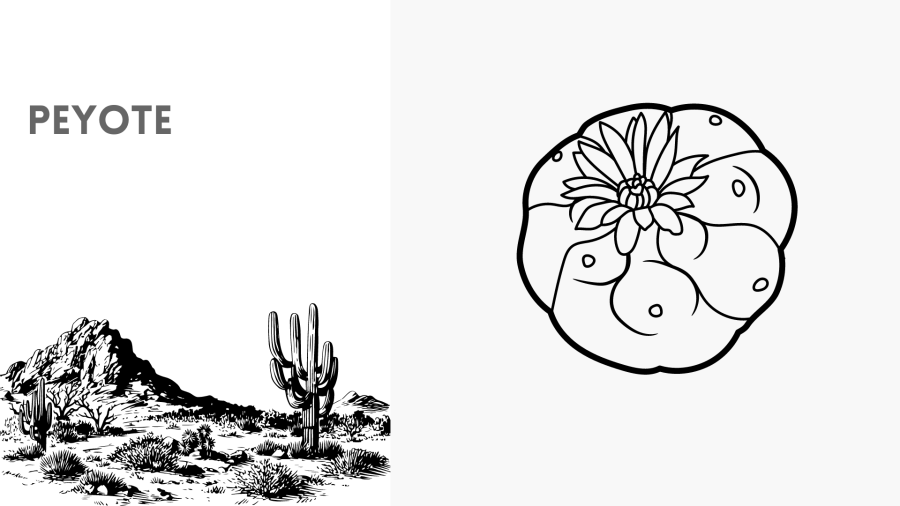
The Sacred Peyote: A Pillar of Vision and Spirituality in Huichol Culture
In the heart of the Sierra Madre Occidental, the Huichol people, or Wixárika, preserve a profound spiritual tradition that intricately weaves their way of life with the natural world. Central to this tradition is the sacred peyote cactus, known as “hikuri,” a plant revered not only for its psychoactive properties but also for its deep spiritual significance. Let us explore the role of peyote in Huichol culture, its symbolic meanings, and its pivotal place in ceremonies that seek to bridge the human and divine.
The Spiritual Significance of Peyote
Peyote, a small, spineless cactus, holds a revered place in Huichol cosmology. It is more than a plant; it is a sacred conduit to the spiritual realm, providing visions, guidance, and healing. For the Huichol, peyote is a living entity, a divine messenger that connects them to their gods, ancestors, and the natural world.
The Huichol believe that hikuri possesses a consciousness that communicates with them during ceremonies, offering insights and visions that guide their personal and communal lives. This deep relationship with peyote is a testament to the Huichol’s respect for nature and their understanding of its spiritual dimensions.

Ceremonial Use of Peyote
Peyote ceremonies are at the heart of Huichol spiritual practice. These rituals are often led by a shaman, or “mara’akame,” who has undergone rigorous training to guide participants through the sacred journey that peyote facilitates. The ceremonies involve singing, chanting, and the use of sacred objects, such as gourd bowls, to invoke the presence of deities and ancestors.
Participants consume peyote buttons, which induce altered states of consciousness, allowing them to transcend the physical world and enter the spiritual realm. During these ceremonies, individuals seek visions that provide healing, wisdom, and guidance. The experiences gained through peyote are seen as direct communications from the gods, offering insights into the nature of life, the universe, and the self.
Symbolic Meanings in Huichol Art
The visions induced by peyote are often translated into the vibrant art of the Huichol people. Their artwork, characterized by intricate beadwork and yarn paintings, frequently depicts the peyote cactus and other sacred symbols. These artistic expressions are not merely decorative; they are visual narratives that convey the spiritual journeys and divine revelations experienced during peyote ceremonies.
Common motifs in Huichol art include:
- Peyote Cactus (Hikuri): Symbolizes spiritual enlightenment and divine connection.
- Deer (Maxa): Represents guidance, protection, and the intermediary between humans and the spiritual world.
- Eagle (Werika): Signifies vision, power, and the ability to soar between earthly and divine realms.
- Corn (Iyari): Reflects fertility, sustenance, and the blessings of the earth.
These symbols, deeply intertwined with the peyote experience, are a testament to the Huichol’s profound spiritual insights and their harmonious relationship with the natural world.
Preservation of Tradition
In the face of modern challenges, the Huichol people remain steadfast in preserving their peyote traditions. This commitment is not only about cultural preservation but also about maintaining a vital spiritual practice that connects them to their ancestors and their gods. Efforts to protect peyote habitats and ensure the continuity of traditional ceremonies are crucial to the survival of this sacred practice.
The peyote cactus stands as a symbol of resilience, spirituality, and the enduring connection between humanity and the divine. For the Huichol, it is a sacred teacher, a guide, and a source of profound wisdom. As we learn about the significance of peyote in Huichol culture, we gain a deeper appreciation for the intricate ways in which indigenous traditions honor and interact with the natural world, offering valuable lessons in spirituality, respect, and the interconnectedness of all life.
The peyote cactus is far more than a plant in Huichol culture; it is a sacred symbol and a vital component of their spiritual practice. Through its use in ceremonies, its depiction in art, and its role as a divine messenger, peyote embodies the profound spiritual heritage of the Huichol people. As we explore its significance, we are reminded of the deep wisdom and rich traditions that continue to guide the Huichol on their spiritual journeys, fostering a harmonious relationship with the natural world and the cosmos.






I was fascinated to learn about the symbolic meanings in Huichol art. The way they incorporate peyote into their beadwork and yarn paintings is a beautiful expression of their spirituality.
Peyote holds such a sacred place in Huichol culture. It’s amazing how they use it to gain visions and connect with their gods. Their traditions are so rich and meaningful.
The Huichol’s relationship with peyote is deeply spiritual. Their ceremonies and the insights they gain from peyote are a beautiful reminder of the interconnectedness of all life.